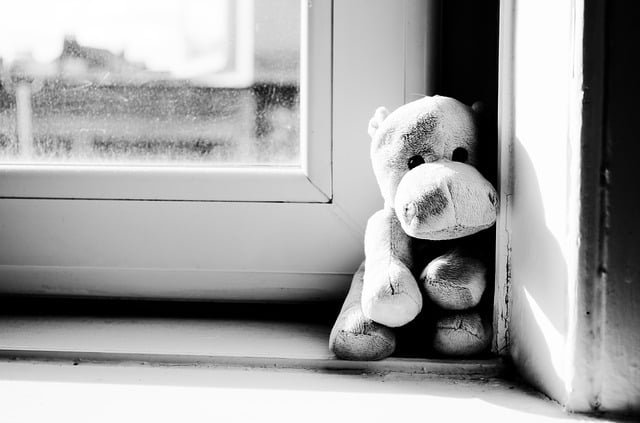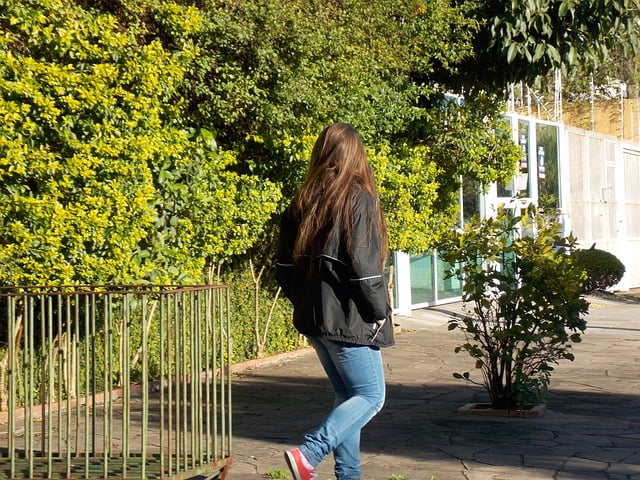A Safeguarding Hub 15-minute briefing
I first became aware of the word Barnahus back in 2016, when in September of that year I read a media report about the launch of the first ever ‘Child Houses’ in the UK. Based on the Icelandic Barnahus model, these UK ‘pilot’ houses would offer a bespoke support service to children who had been sexually abused and exploited.
With a background in rape and serious sexual assault, I had seen the initial care for victims of serious sexual offences evolve over the years. From back in the dark ages where a victim would have to sit in a police interview room overnight until a specially trained officer came on duty in the morning; to the current day, where those specialist officers are now deployed within an hour and victims are medically examined at the excellent London Haven’s specialist sexual assault referral centres. So, I read with great interest how these new facilities would enhance the care of child victims even further.
I went digging for more information and found that in June (2016), the office of the Children’s Commissioner Anne Longfield, had published a report titled ‘Barnahus: Improving the response to child sexual abuse in England’. This report highlights the fact that in England, children who disclose sexual offences often end up having to give multiple accounts to various agencies in multiple settings. The document also pointed out that these interviews are not achieving their aim, which is to obtain best evidence, and also emphasised the trauma that a child can face because of the “long waiting lists to access specialist therapeutic support”. The report showcased the benefits of the Barnahus model and called on commissioners in England to look at how the model could be piloted and adapted into our legal system.
A couple of months before the report was published, Mrs Longfield had written about the Icelandic Barnahus model as being a bold and innovative way to help children who are sexually abused. She said we needed to get to a place where children “gain confidence in the authorities; to tell others about what’s happened to them; to provide robust and credible evidence to the police; and to get the help they need to recover and move on”. The Commissioner highlighted the impressive results in Iceland and talked about Barnahus being “adapted to the English context”. She said, “in ten years’ time I hope the Barnahus is something that we will all recognise and value as a vital tool in this country’s armour to tackle and prevent child abuse”. I have a great deal of respect for the work of the Commissioner and was pleased to see that she had thrown her considerable influence behind this great idea.
What is the Barnahus model?
The literal translation of Barnahus means ‘Children’s House’. Barnahus originated from the Child Advocacy Model adopted in the US in the 1980s, before being developed in the late 1990’s by Iceland. Over the next 15 years it was adopted by the other Scandinavian countries – Sweden, Norway, Greenland, Denmark and most recently piloted in Finland. The Icelandic model embraces a multi-agency response to child abuse cases, placing all the disciplines required in abuse cases under one roof. The care and welfare of the child is at the centre of all decision making. The model recognises the harm and trauma that multiple interviews, locations and various agency involvement can have on a child and also their families. It offers forensic interviews, medical examinations and access to therapeutic services in one place. In Iceland, its introduction had a significant influence on the number of children finding the confidence to come forward to seek help and make disclosures. This has also led to a notable increase in conviction rates.
For more information on Barnahus we recommend you read : Barnhaus: a quality review of 23 Swedish Barnahus by Save The Children (Sweden). Whilst this deals specifically with Barnahus in Sweden, it still provides a good overview of how they work in practice.
Why do we need them?
A 2015 NHS report, ‘Review of pathway following sexual assault for children and young people in London’ identified that very few children and young people who have been sexually assaulted or abused come to the attention of police, social care or health providers. The report highlighted that “on average 400 children attend the Havens each year for a forensic medical examination following an acute sexual assault”, a figure that is potentially only 5% of the actual number who experienced sexual abuse in that same period. The report talked about children and young people facing a variety of obstacles in accessing care and support across London. The purpose of the review was to “make an assessment of the service provision across London in order to better understand some of these obstacles”
The result of the review identified gaps in the medical and emotional aftercare offered and provided to children. The authors made a recommendation to implement five Child Houses across London to provide better provisions and plug the current gap.
What were the details of the proposed pilot?
The 7.2 million funding for the project reportedly came from the Home Office Innovation Fund, after application from the London Mayor’s Office for Policing and Crime (MOPAC), and jointly matched by NHS England (London). The official announcement was pretty high profile with the Mayor of London, Sadiq Khan, being joined by then Home Secretary Amber Rudd and Deputy Mayor for Policing Sophie Linden at Kings College Hospital, the site of one of the Haven’s.
At the time it was claimed that each Child House would potentially be able to offer support to over 200 children and young people per year. The timescales given were that two houses would open in London in the Spring of the following year (2017), with plans for a further three to follow at some stage.
What did the UK version look like?
The proposal was that the UK Child Houses would be staffed by multi-agency experts under the one roof. Services and benefits of the house would include:
- medical, healthcare advice and support
- emotional support and counselling
- support through the investigative and criminal justice process
- advocacy service
- onward referral to a range of long term support services, e.g. NGO’s, CAMHS, GP
- clinical psychology led ‘Achieving Best Evidence’ interviews
Aims included:
- preventing a child from having the trauma of repeating their statement in multiple interviews to various agencies – police, social care, health etc.
- the collection of ‘best evidence’ – interviews led by child psychologists on behalf of police and social workers
- early capture of forensic evidence
- ensuring the child is seen at one comfortable and familiar child-friendly setting, rather than being dealt with at multiple locations
- eradicating unnecessary delay and speeding up the process to the court stage
What happened next?
Towards the end of 2017 I decided to revisit the idea of Child Houses, thinking that promoting the new homes would make a good article for this website. However, I hit a bit of a brick wall and couldn’t find any information on the new houses, which by this stage should have been up and running. I made some enquiries of colleagues in the child abuse and sexual offences investigation fields but drew a blank. I moved onto other subjects, deciding to revisit the topic at some point in the future.
In May this year I found that the NSPCC had published a news piece on their website, announcing the creation of a ‘Child House’ in Camden, London. The article claimed that this house would be the first of its kind in the UK. They described the Child House, leaving me with no doubt that they were describing the Barnahus model. I was confused. Why were the NSPCC saying that this single Child House would be the first in the UK, when we should have had at least two such establishments back in the Spring of 2017? Furthermore, the NSPCC article talked about the house being funded by four government agencies with additional backing from the investment bank Morgan Stanley. Their employees had apparently raised a million pounds towards the project.
On one hand it seemed the NSPCC were talking about the same Child Houses mentioned back in 2016, but on the other, what had happened to the 2017 launch? Why were they seemingly relying on partnership with Morgan Stanley, when 7.2 million funding had been secured from the Home Office for the original pilot? Still, I was pretty sure that this was still the one and same thing. Less than a week later an email arrived in my inbox containing a collaborative power point presentation (PPT) from the NSPCC, University College London Hospitals NHS Foundation and The Tavistock and Portman NHS Foundation. The title of the PPT was ‘Camden Child House’. There was no doubt after I had viewed the PPT, that this was the identical proposal to that in 2016.
Did something go wrong?
This heading is not meant as a criticism. I actually don’t know what happened and I am genuinely interested in why it was delayed, and why the blueprint looks different from the one announced in June 2016. I am acutely aware that it is not always easy getting multi-agency projects off the ground things, and there can be a great deal of ‘slippage’ when it comes to timescales. The only partial clue I could find to the delay was an executive summary form originating from the Mayor’s Office Policing & Crime (MOPAC) decisions and governance page, dated 14th February this year. This states:
“MOPAC and NHS England (London Region) have secured funding from the Home Office and the Department for Education, alongside match funding from MOPAC and NHS England (London Region), to pilot the Child House model for victims of child sexual abuse and child sexual exploitation in North Central London”.
The internet document mentions overall funding of £7.5m to deliver the Child House model in London. It then provides a short summary on the services it will provide, and a breakdown on how the funding is going to be allocated to the various organisations involved in the pilot. The document also mentions that this will be a 2-year project, the first of its kind in the UK and it will be based in Camden, opening in 2018. It will serve the London boroughs of Barnet, Camden, Enfield, Haringey and Islington and encouragingly provide support to approximately 700 children and young people per year. This is 500 more than the estimate in 2016. The penultimate entry on the paper states that this latest decision supersedes the previous decision under the “Home Office Innovation Fund – Child House”, taken in 2016. So, definitely the same project, with the same funding, but slightly revamped.
Going forward
None of this is bad news. Ideally it would have been good to have the pilot up and running a lot earlier, along with the proposed second site. However, there is little point in piloting a new initiative without it be fully prepared. Looking at the positives, it is encouraging that the various organisations and agencies involved in this project have taken their time and can now deliver what appears to be a high-quality service to young victims of abuse.
The good news is that ‘The Lighthouse’ as it is now known has now opened its doors. As well as supporting children and young people, it also has provision to assist young adults aged 18-25 with learning disabilities. The team at the provision include: Police Liaison, a Paediatrician, a Paediatric Nurse, a Play Specialist, Social Care Liaison, Social Worker/MASH, Children’s Advocates, CAMHS and NSPCC therapeutic practitioners.
It is very early days, but I am a great believer in having multi-agency safeguarding professionals in the same location, working together as a team. Where I have seen this in action, the feedback in nothing but positive from all professionals involved. Understanding in-depth each other’s roles, limitations and frustrations, allows us to problem solve together and ultimately provide a better service for those we are tasked with safeguarding. I am sure the Lighthouse will be a success given the professionals involved and the model it is based on. Hopefully, we are still on course for the Children’s Commissioners vision, and in ten years time Child Houses will be at the forefront of our response to dealing with victims of child sexual abuse.
Thanks for reading








